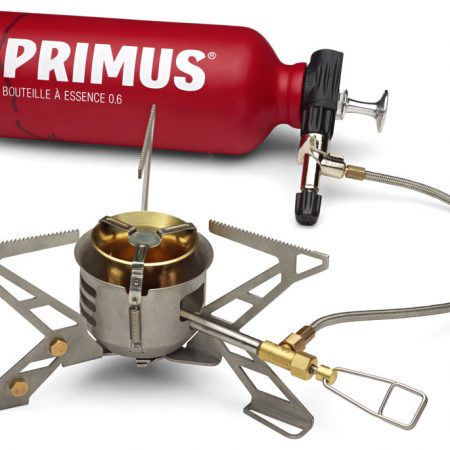We’ve got a brand new article to help you pick a stove. Below is a condensed version, but you can read the whole article here – How to Choose a Stove.
How to Pick a Stove
Picking your way through the large array of stoves that are currently available on the market can be a difficult process and choosing the perfect stove for the job isnít easy.
At Facewest we stock three main types of stove, LPG Canister stoves, Liquid Fuel and Multi Fuels Stoves. All three stove types are able to do similar things such as boil water for your morning coffee or cook your better half a camp cordon bleu meal; however some perform these tasks better than others. Also what stands each stove type apart is under which conditions they perform best.
Having a basic understanding of how each stove type works and in what environment they work best will help you decide which stove is best for you.
Below youíll find a brief description of each stove type.
LPG Canister Stoves (Liquid Petroleum Gas)

These are by far the simplest and easiest stoves to use and for the vast majority of people will be all they need. LPG stoves use a pressurised Gas canister that contains a mix of Propane, Butane, or Isobutene. The canister is screwed securely to the stove via a sealed thread, either directly on to the burner unit like the MSR Pocket Rocket or on to a hose that is then connected to the burner similar to the Optimus Vega. Once the canister is attached simply turn the stove on, ignite, and hey presto youíre cooking on gas!† Each stove has a valve or dial that can be turned to regulate the flame height and intensity. Canister stoves are very light, packable and require next to no maintenance.
Liquid Fuel Stoves

Liquid fuel stoves are a little more complex than the canister based stove, they burn a variety of different fluids. The main types are Kerosene, Petrol, White gas & Diesel.† Liquid fuel stoves are far cheaper to run than canister stoves, you also have the ability to work out how much fuel you will need for your trip and only take that with you. With canisters† you always end up with half empty canister kicking around which either you donít use or you take with you along with a full canister in order to ensure you donít run out fuel. Donít forget canisters need to be brought home with you when they are empty to dispose of them! Pretty much all liquid fuel stoves are of a similar design. The burner heads are free standing and are attached to the fuel bottle via a fuel line. They are perfect for larger groups and are used widely at high altitudes and in very cold environments.
Multifuel Stoves

Whilst Liquid only and Multi Fuel stoves are different they are at their heart very much the same. A Multi Fuel or Gas and Liquid stove simply has the ability to attach a Gas canister to the stove as well as being able to burn liquid fuels. This makes multi fuel stove incredibly versatile and the perfect choice for people who travel a lot or for people who wish to have one stove that will do everything.
For the vast majority of people a canister based stove will be the most convenient and suitable stove. They are perfect for weekends away camping, backpacking or cycle touring. The ease of use makes cooking up an evening meal a doddle, also the low weight and bulk makes them easy to stow away. If you are someone who travels further afield to more remote locations a better option would be to go for a multi fuel stove, that way you have the ability to swap between Gas and Liquid fuels when needed. There will be a small majority of people who demand much more from their stove such as camping at higher altitudes or travelling to Polar Regions. If this is you then a stove designed to perform at its best in these conditions is the only option.


